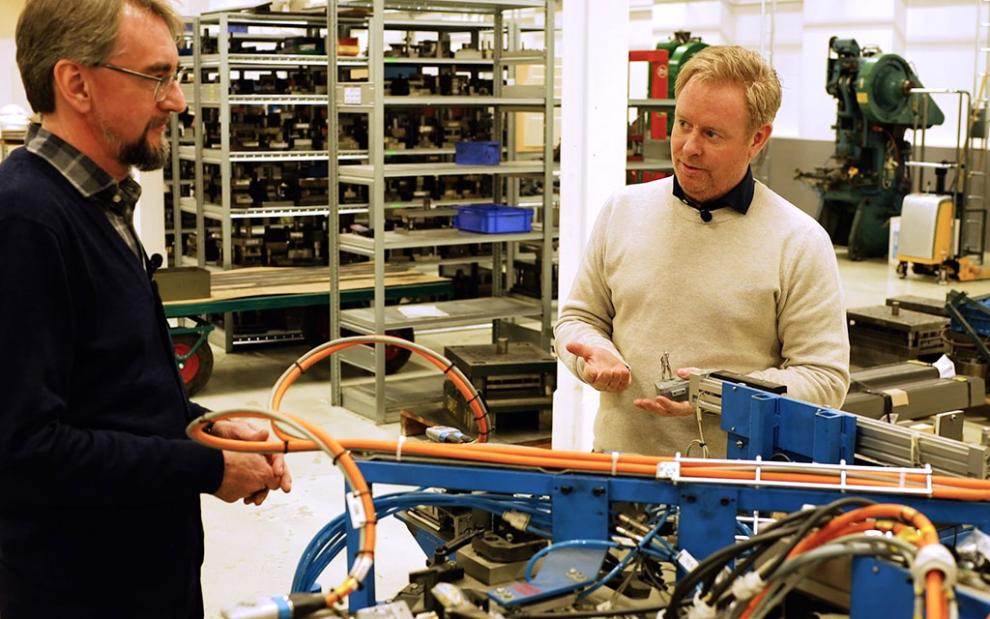Following a comprehensive review of the Up-Skill case study organisation´s business strategies, outputs, production processes and strategic technology challenges and objectives, the next step for the Up-Skill researchers is to identify technologies that can provide solutions to manufacturing and production process issues, whilst simultaneously being integrated effectively with the human workforce and complimenting the firm´s overall business strategy and market operations.

This second phase of the case study development was led by Lancaster University who have produced a report showing the best practice technology solutions selected for each of the case studies.
The report follows on from the information gained in Work Package 1 – Enabling Technology Assessment - and focuses on the identification of technologies and processes that will enable the case studies to be developed, what the technology and company requirements are, and if and how to implement them, then recommend possible solutions. The case studies consider a range of study materials, from hardware investigations, software data mining, implementation of finished product and a review of premium-handcrafted top of the range artisanal products.
Each of the participating companies will undergo a thorough review so Up-Skill researchers can clearly identify, in detail, the business and manufacturing contexts, and then map-out a coherent process to implement technologies and training procedures that will provide long-term, sustainable solutions to current production issues. The key concepts that will be identified are:
- Business Area – Definition of the business area within which the case study exists.
- Description of the boundary conditions of the defined case study. Clearly stating what is in, and out of scope.
- Hardware requirements of proposed solutions.
- Software and Data Requirements of Proposed Solutions.
- Infrastructure requirements of proposed solutions - The required changes to the company´s infrastructure to deploy the proposed solution will be defined.
- COTS vs Bespoke - Categorisation of the proposed solutions in terms of commercial off the shelf (COTS) versus customised bespoke technologies.
- Training requirements of proposed solutions - Any new skills that the operating staff will require to realise the potential of the proposed solutions.
- Benefits and success criteria - The benefits to the company and employee experience as a result of the proposed solutions will be defined.
- Environmental impact of proposed solutions - e.g., power consumption, waste, noise etc. will be assessed.
- An analysis of the risks and opportunities associated with the proposed solutions.
A major concern for some firms is the loss of a specialised human skillset that they heavily rely on as part of their production processes and would be difficult to replace if those employees left the firm. A good example of this is the case study being conducted at Ztift in Eskilstuna, Sweden. Ztift manufactures a variety of products and components, particularly door locks and their related mechanisms, for household, marine and security system applications, which are often machined, welded, and assembled by hand and require a high degree of skill and experience.
The Up-Skill project is investigating possible solutions for Ztift whereby human innovation and skill are maintained as a vital part of their competitive advantage and production process on the factory floor, but also that complimentary technologies are implemented, mitigating the risks associated with the loss of critical, highly specialised skills.
Solutions that will be investigated by the Up-Skill ethnographers are the introduction of computer numerical control (CNC) milling and lathe technologies that could improve the conformity and quality of parts and reduce the amount of waste. In addition, technologies such as scanning devices and augmented reality will be explored that can provide real time information to employees on digital displays, linking information from ordering and process control systems, allowing workers to adapt their workflow accordingly and easily transition from one assembly station to another.
This increased fluidity of labour, with only the generic CNC operator skills being essential to manufacture a larger range of components, will allow the operator to be easily trained on numerous processes. These changes to the work environment can be seen in two different lights. On one side, it could be argued that specialised, technical skills will be lost and replaced by machines, resulting in the deskilling of the workforce. On the other side, it is clear that workers will acquire new and a broader set of skills relating to operating machinery and interpreting and acting upon information provided by these technologies.
From a broader perspective, it would not be assumptive to say that it is inevitable that the emerging technologies will replace a number of jobs and human skills in the near future, not just in industry and manufacturing, but also across a variety of other sectors. What this could mean is that narrow and specialised skillsets, which have been a clear indicator of career success in the past, will hold less value in the new digital economy, and it is a broader, more adaptable set of skills that will be most valued and key to sustainable development within the economy, not just for individual workers, but for firms as well.